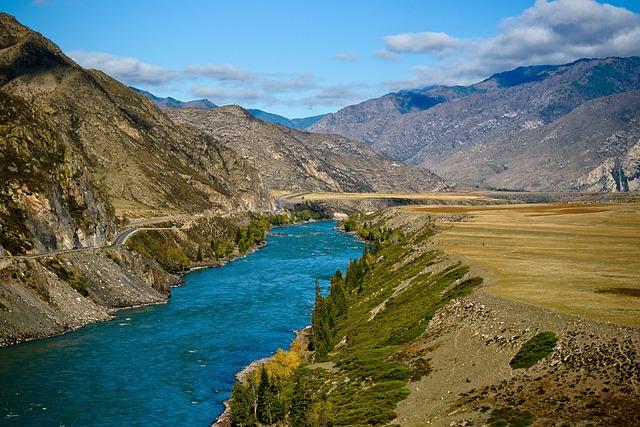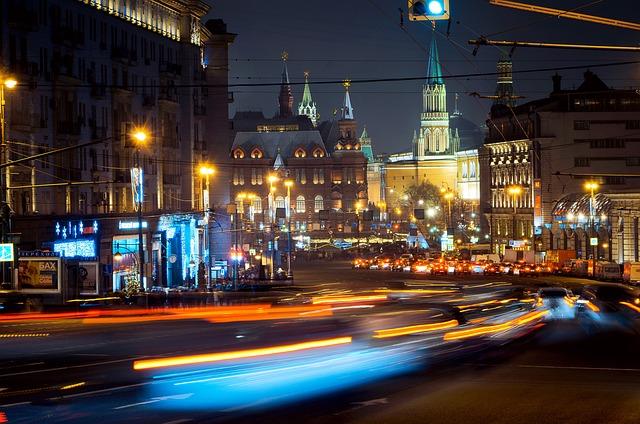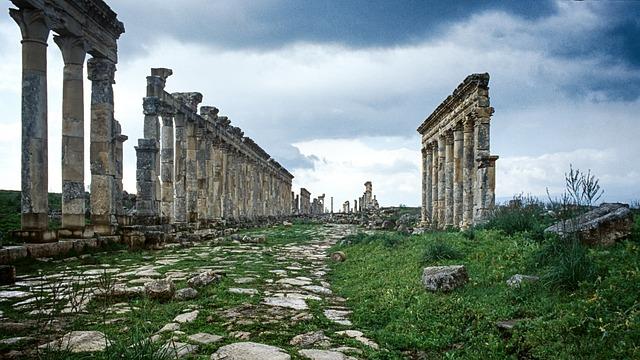As the dust settles on over a decade of civil war in Syria, the future of the nation remains precarious, with myriad forces vying for influence in a region long steeped in conflict.Central to the unfolding saga are two pivotal players: Russia and Iran.Both countries have entrenched themselves in the Syrian conflict, offering military support and political backing to President Bashar al-Assad’s regime, thereby shaping the trajectory of the war and the nation’s eventual reconstruction. As Syria emerges from the shadows of conflict, the question looms larger than ever—what roles will Russia and Iran play in a post-Assad Syria? This article delves into the strategies these neighboring powers may employ, the motivations driving their involvement, and the implications of their presence for both Syria and the broader Middle East. Through an analysis of their past ties, current interests, and potential paths forward, we aim to shed light on the complex interplay of geopolitics in a region still grappling with the echoes of war.
The Strategic interests of Russia in a Post-Assad Syria
In a post-Assad Syria, Russia’s strategic interests are multi-faceted, centering primarily on maintaining its influence in the Middle East, securing economic footholds, and ensuring regional stability that favors its geopolitical ambitions.With a transformed political landscape likely leading to new alliances and rivalries, Russia aims to position itself as a primary power broker. Key interests include:
Military Presence: Retaining advanced military bases, such as the naval facility in Tartus, solidifies Russian naval capabilities.
Energy security: Securing contracts for oil and gas exploration and production ensures Russian energy dominance in the region.
Countering Extremism: Preventing the resurgence of extremist groups is vital for regional stability, aligning with Russia’s global counter-terrorism narrative.
Moreover, Russia’s approach to post-Assad Syria will likely involve cultivating relationships with various political factions and ethnic groups to bolster its standing. By leveraging its diplomatic skills, Moscow aims to facilitate dialogues between the Assad government, Kurdish groups, and opposition factions. This balancing act seeks to prevent any single entity from gaining complete control,which coudl threaten Russian interests. Vital elements in this endeavor include:
Political Influence: Supporting platforms that integrate minority groups, thus ensuring a diverse governing body.
Economic Investment: Engaging in reconstruction efforts to establish economic ties, while concurrently ensuring a dependency on Russian resources.
Collaboration with Iran: Navigating its partnership with Tehran, ensuring that their contrasting objectives do not destabilize the region’s delicate balance.

Iran’s Influence and Its Long-Term Goals in the Region
Iran’s involvement in Syria extends beyond mere military support for the Assad regime; it is indeed deeply rooted in a strategic vision aimed at establishing a dominant role in the Middle East.By aiding Damascus, Tehran seeks to bolster its influence along critical supply routes and expand its support networks for proxy groups throughout the region. Key objectives include:
Extending the Axis of Resistance: Iran aims to solidify its alliance with Hezbollah and other militant groups, facilitating a corridor for strategic operations against Israel.
Regional Hegemony: Establishing itself as a primary regional power by countering U.S. influence and that of its allies.
Economic Gains: Accessing Syria’s resources and rebuilding contracts post-conflict,enhancing Iran’s economic foothold in the area.
Despite potential setbacks, Iran’s long-term strategy emphasizes a multifaceted approach that integrates military, political, and economic dimensions. As the situation in Syria evolves, tehran is likely to strengthen its ties with local militias and governmental entities to ensure its interests are safeguarded. Additionally, the following factors will play a crucial role in Iran’s long-term planning:
Factor
Description
Military Presence
Continued deployment of IRGC forces and affiliated militias throughout Syria.
Diplomatic Engagement
Strengthening alliances with Russia and engaging in talks with regional powers.
economic Investments
Investing in infrastructure and rebuilding efforts to solidify economic dominance.

The Complex Dynamics of Russian-Iranian Relations in Syria
The intricate interplay of russian and Iranian interests in Syria underscores a multi-faceted relationship shaped by historical ties, strategic goals, and the evolving landscape of regional power dynamics.Russia, with its focus on maintaining a foothold in the Eastern Mediterranean, sees Syria as a critical ally to counter Western influence and protect its naval facility in Tartus. Conversely, Iran views its involvement as part of a broader effort to establish a land corridor to the Levant, enhancing its regional capabilities and supporting proxy groups like Hezbollah. Despite these common aims, both nations exhibit distinct strategies that can lead to tensions: Russia’s preference for a diplomatic solution contrasts with Iran’s backing of military engagements and militia groups, complicating their collaboration in post-Assad governance.
the complex dynamics of their partnership in Syria are further illustrated by their respective roles in the reconstruction phase following the civil war. while Russia aims to position itself as a primary mediator, brokering negotiations among Syrian factions and international stakeholders, Iran is dedicated to consolidating its influence through economic investments and military presence, thus embedding itself deeper into Syrian political structures. The upcoming shifts in Syria’s political landscape will likely require both countries to navigate their competing ambitions carefully,balancing cooperation and rivalry. This evolving relationship will influence not only Syria’s future but also the broader geopolitical shifts within the Middle East and beyond.

Rebuilding Syria: Economic Opportunities for Russia and Iran
The ongoing conflict in syria has left the nation in dire need of reconstruction and economic revitalization. As the Assad regime consolidates its power, key players like Russia and Iran are positioning themselves to capitalize on rebuilding efforts. Their involvement comes with substantial economic opportunities,particularly in sectors such as energy,construction,and agriculture. By investing in Syria’s infrastructure, both countries aim to secure strategic footholds and strengthen their influence in the region. Key areas of interest include:
Energy Progress: Potential investments in oil and gas fields, including restoration of production facilities.
Infrastructure Rehabilitation: Reconstruction of roads, bridges, and utilities vital for economic recovery.
Agricultural Revitalization: Assistance in restoring agricultural productivity to ensure food security.
furthermore, the prosperous implementation of these projects could lead to lucrative contracts for russian and Iranian companies. Both nations have the capacity to extend their supply chains and recruit local labor, thereby fostering economic growth while simultaneously augmenting their geopolitical clout.A recent analysis of projected investments highlights the potential scale of their involvement:
Sector
Estimated Investment ($ Billion)
Potential Returns ($ Billion)
Energy
5
15
Infrastructure
3
10
Agriculture
2
8

Challenges Ahead: Balancing Power and Stability in a Fragmented Landscape
The post-Assad landscape in Syria presents a complex web of challenges, primarily due to the fragmentation of power among various factions and external actors. Russia and Iran, both of whom have vested interests in maintaining influence, face the daunting task of coordinating their objectives while navigating the shifting allegiances and rivalries among local players. Key factors influencing their roles include:
Military Presence: Both nations have bolstered their military capabilities in Syria, with Russia focusing on aerial support and precision strikes, whereas Iran is more entrenched in ground operations and support for proxy forces.
Political maneuvering: Balancing the interests of diverse syrian factions while sustaining legitimacy is crucial; Iran leverages its ties with Hezbollah and other militias, while Russia engages with various local leaders to position itself as a mediator.
Economic Investments: Both powers seek to exploit Syria’s resources for their own economic gains, complicating the dynamics further as they compete for contracts and influence over reconstruction efforts.
Furthermore,the increasingly volatile regional environment adds another layer of complexity. The potential emergence of new players seeking a foothold in Syria has prompted both Russia and Iran to reassess their strategies. As their relationships with the Assad regime evolve, they must also consider the geopolitical implications of their actions. This juxtaposition places them at a crossroads where they must urgently foster stability without compromising their long-term strategic objectives. A delicate balancing act will ensue as both powers strive to navigate through:
Factor
Russia’s Approach
Iran’s Approach
Military Strategy
Support for Syrian Army, focus on air power
Empowerment of local militias
Political Relations
Engage with various factions
Strengthen ties with loyalist groups
Economic Goals
Secure energy contracts and reconstruction
Expand influence through military and economic aid

Recommendations for International Engagement in Syrian Reconstruction
To effectively navigate the complex landscape of Syrian reconstruction, international actors must prioritize a multi-faceted approach that recognizes the distinctive roles of russia and Iran. Engagement strategies should emphasize collaboration over competition, fostering partnerships that align both political interests and humanitarian goals. Key recommendations include:
Building Inclusive Coalitions: Involving local Syrian communities, civil society organizations, and regional stakeholders to ensure that reconstruction reflects the needs of the populace.
Promoting Economic Opportunities: Creating joint initiatives focusing on job creation and infrastructure development that benefit all contributing countries while alleviating the dire economic conditions in Syria.
Enhancing Humanitarian Aid Coordination: Streamlining efforts through established international bodies to avoid duplication of resources and maximize impact.
Furthermore, aligning international engagement with a set of shared principles can provide a framework for constructive dialog.Establishing clear benchmarks for progress and accountability is crucial. This should involve:
Principles
Description
transparency
Ensuring all actors are open about their goals and actions to build trust among stakeholders.
Inclusivity
facilitating the participation of diverse Syrian voices, including marginalized groups.
Responsibility
Holding all parties accountable for their commitments to reconstruction efforts.

Key Takeaways
As the Syrian conflict enters a new phase following the tenuous stabilization of the Assad regime, the roles of Russia and Iran emerge as pivotal elements shaping the country’s future. Both nations, while united by a common interest in preserving the Assad government, bring distinct agendas and approaches that could influence the trajectory of post-war Syria.
Russia’s strategic calculations are driven by a desire to project power and secure its foothold in the Eastern Mediterranean, while Iran’s involvement is deeply tied to its ideological and regional ambitions, seeking to expand its influence through various proxy groups. the interplay between these two powers not only affects their bilateral relations but also poses challenges for various stakeholders inside and outside Syria, necessitating a careful navigation of interests.
Understanding the dynamics of Russian and Iranian influence in Syria will be crucial for policymakers and analysts alike as they seek to address the complex humanitarian and political issues that persist in the region. The post-assad landscape remains fragile, and the ongoing competition and collaboration between these allies will be decisive in shaping Syria’s recovery or continued turmoil. As the situation evolves, it will be essential to monitor how these two powers balance their interests and the implications they hold for the future of Syria and the broader middle East.
—-
Author : Asia-News
Publish date : 2025-02-21 07:49:00
Copyright for syndicated content belongs to the linked Source.